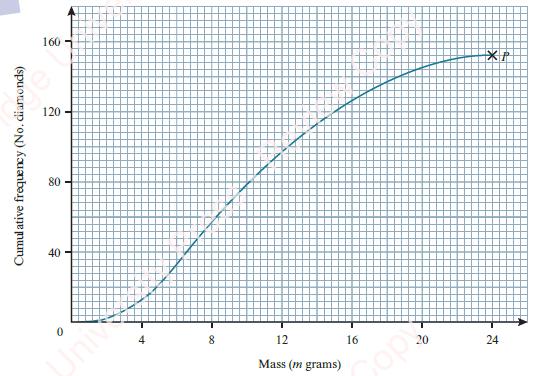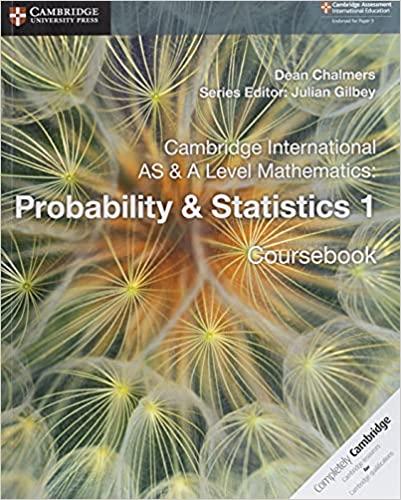The following cumulative frequency graph shows the masses, m grams, of 152 uncut diamonds. a. Estimate the
Question:
The following cumulative frequency graph shows the masses, m grams, of 152 uncut diamonds.

a. Estimate the number of uncut diamonds with masses such that:
i. 9 ≤ m < 17
ii. 7.2 ≤ m < 15.6.
b. The lightest 40 diamonds are classified as small. The heaviest 40 diamonds are classified as large. Estimate the difference between the mass of the heaviest small diamond and the lightest large diamond.
c. The point marked at P(24,152) on the graph indicates that the 152 uncut diamonds all have masses of less than 24 grams.
Each diamond is now cut into two parts of equal mass. Assuming that there is no wastage of material, write down the coordinates of the point corresponding to P on a cumulative frequency graph representing the masses of these cut diamonds.
Step by Step Answer:

Cambridge International AS & A Level Mathematics Probability & Statistics 1 Coursebook
ISBN: 9781108407304
1st Edition
Authors: Dean Chalmers, Julian Gilbey





